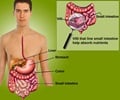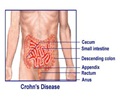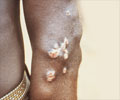
"Better diagnostic tools and new methods of surveillance provide more affordable and realistic opportunities to improve the planning, monitoring, and evaluation of NTD control," write authors Dr. Peter Hotez, President of the Sabin Vaccine Institute and Distinguished Research Professor of The George Washington University Medical Center, Dr. Simon Brooker, Reader in Tropical Epidemiology and Disease Control at the London School of Hygiene and Tropical Medicine and Research Fellow at KEMRI-Wellcome Trust Research Programme in Nairobi, Kenya and Professor Donald Bundy, Coordinator of the Africa Program for Onchocerciasis Control (APOC) and Program Leader in Maternal and Child Health, Population and Nutrition, Africa Region, The World Bank.
The authors assert that, in the past, NTD control has been incomplete and unreliable because of weak disease surveillance systems, and that a "new generation of diagnostics provides a sound foundation for developing reliable, up-to-date maps of the distribution of different NTDs to guide and target resources efficiently. Without such maps, the journey of NTD control will be difficult."
New mapping technologies utilize electronic data entry at the point of collection and rapid transmission of information to a central database using mobile phone technology. Once the data have been compiled, geographical information systems (GIS) simultaneously manage and display the data and include estimates of such variables as temperature, vegetation, and humidity, which affect NTD distribution.
Although many surveys of NTDs have been conducted, the most detailed maps are for onchocerciasis, lymphatic filariasis, and schistosomiasis. These maps are an important resource, but much of their data are old and not easily accessible to policy-makers and managers of public health programs.
The authors highlight a project, the Global Atlas of Helminth Infection (GAHI), which will provide open-access information on the distribution of soil-transmitted helminthiases and schistosomiasis. The GAHI will also highlight the geographical areas where further survey information is required via the GAHI website (http:www.thiswormyworld.org.)
Advertisement
Source-ANI










